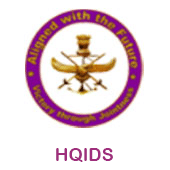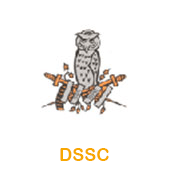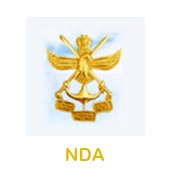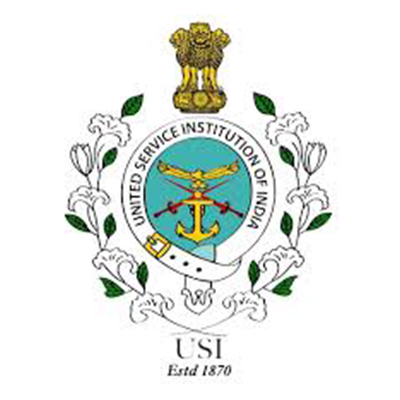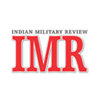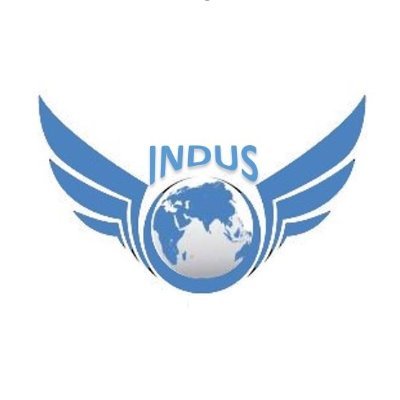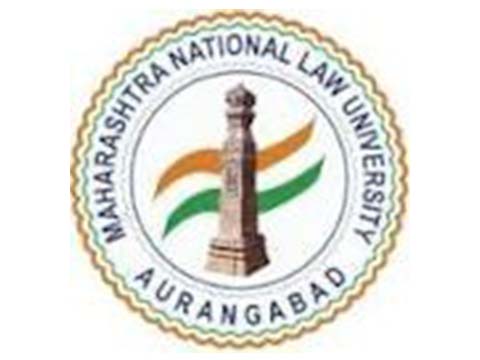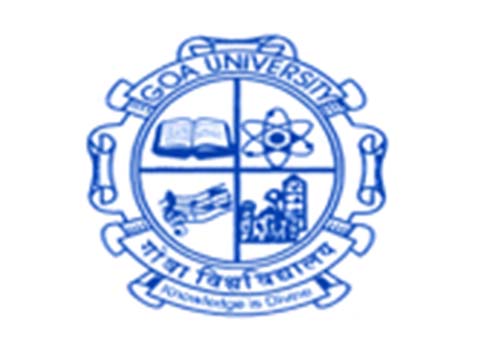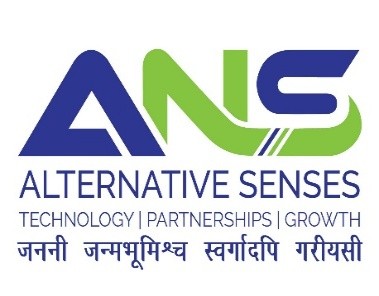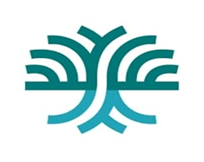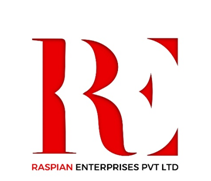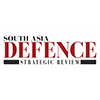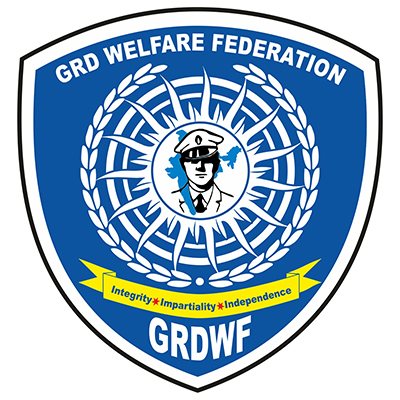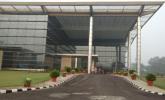
Seminar | 24-Jul-2017
Seminar | 24-Jul-2017
Proceedings of Seminar on FORCE PROTECTION 2017
INAUGURAL SESSION
1. Welcome Address : Lt Gen Vinod Bhatia, PVSM, AVSM, SM (Retd), Director, CENJOWS. In his welcome address Lt Gen Vinod Bhatia, PVSM, AVSM, SM (Retd), Director, CENJOWS welcomed all the delegates in the seminar on behalf of CENJOWS and IMR. He then emphasized the imp of survivability of soldiers in the current security challenges both in conventional and non-conventional domains. He explained that the long term development of the nation needs robust security including preparedness for all scenarios. He emphasized that there is an urgent need to ensure “Head to Heal Protection” to all the soldiers for which the users, industry and decision makers need to work together. He said that force protection requirements can be based on low to medium technology and it has large volumes including requirements from armed forces, CAPFs and state police forces. He pointed out that there is a distinct resolve in the Government to look for answers hence there is a need to build on it and need to look at all the systems for force protection.
2 . Theme Address : Maj Gen Bipin Bakshi, IG (Trg), NSG. In his theme address Maj Gen Bipin Bakshi emphasized that aim of force protection is to ensure maximum casualties to the enemy and minimize own. The need is of networked soldiers with head to heal protection. He gave out basic parameters of force protection gear as light in weight, right balance between mobility and protection, situation awareness – a must, requisite protection against various munitions, combination of individual and collective protection, introduction of tech solutions and special clothing based on the task.
3. Keynote Address : Maj Gen B V Rao, ADG (EM) MGO Br, AHQ. Maj Gen B V Rao in his keynote address highlighted serious concerns regarding equipping the security forces to face current and emerging threats. He spoke about challenges faced by the industry including lackof technology, poor R & D, complex government procedures and lack of coordination between various stakeholders. He spoke about urgent need for standardization &synergize and JVs to remain current and effective. He informed about the need for suitable equipment for different terrains/environments including NBC for all the elements of SFs including CAPFs. He also gave out details of government initiative under “Make in India” program. He advised the industry to obtain cutting-edge technology, ensure strict quality control, avoid unethical practices, seek a level playing field with importers and have patience with the system. He also advised the services (users) to have friendly outlook withindustry, within services, cut-down in time and move forward in procurements. He exhorted both the industry and the users to adopt proactive approach for 100% indianisation.
SESSION 1
EMERGING TECHNOLOGIES
4. Opening Remarks by the Chairman. The session was chaired by Maj Gen (Dr) GD Bakshi, SM, VSM (Retd). He elucidated that the biggest challenge to India currently is the Maoist threat. He informed the house regarding tactics employed by Maoists and stressed on the need of protecting our troops involved in counter insurgency operations. A scientific / ORSA analysis of bullet hits on troops / armored vehicles in battlefield will go a long way in helping manufacturers to provide BPJs / armor with greater protection to critical areas of the human body / armored vehicle. There is a requirement of up-armoring APCs, B echelon vehicles and helicopters to prepare them for future battles. This should be done without a corresponding increase in weight. Make in India will only succeed if the armed forces and the private sector get fully involved in the process and once this happens we can reduce our procurements from foreign countries.
5. Lt Gen S Madhok, PVSM, AVSM, VSM,(Retd), Dynamatic Technologies spoke about Next Gen Security Solutions. He informed that Dynamatic Technologies was working with the defense forces for the past three decades. The company works on the philosophy of ‘fence-sense-defense’. They provide parts for Arjun, Sukhoi-30, Boeing aircraft, Chinook helicopters, quad- copters, mobile command and control vehicles, etc. The company believes that the two most critical areas in India’s manufacturing are collaboration and investment in new technologies. He said that border management equipment needs to have high probability of detection, be robust, have low false alarm rates, have low dependence on external resources and be capable of integration into bigger picture. He showcased their sensor based robot system, Roboguard, which monitors movement along a border fence. They also provide solutions for protecting armored vehicles without compromising mobility. The company has also developed a new technology called tethered UAV technology which potentially gives unlimited endurance to UAVs and will be useful in counter insurgency and disaster management.
6. Mr Rajesh Gupta, MKU Ltd, spoke about Light Weight Platform Protection. He informed that MKU is a major supplier to global and Indian armed forces. Personnel protection, vehicle protection and electro optics are the three verticals of MKU. The company is not dependent on foreign sources for technology as they have the requisite IPR certifications and their R&D is recognized by the Ministry of Science and Technology. MKU gives light weight, thinner and more flexible armour solutions. They have patented add on armor solutions for land, air and naval vessels and personnel protection vests. MKU is capable of meeting the entire demand of bulletproof jackets of army in less than a year. The up armoring of aircraft is done without any structural changes to aircraft. They also make wire harnesses for defence vehicles and aircraft. Fibre glass helmets with in built antennas can also be provided by MKU.
7. Mr Manish Moti, spoke about Special Steels Developed by Essar Steel for the Defence Sector. He informed that Essar Steel has an end to end steel plant. They have developed steel grades for naval vessels, MBTs, MPVs, guns, bridges, etc. Steels like DMR 1700 and ARMAPRO 500 can be used for armouring combat vehicles as they have the requisite strength. High grade steel for submarine hull construction is being developed by the company.
8. Mr G Eapen, Fenzgard spoke about Base Protection. He highlighted that Fenzgard provides fence systems which are reliable, robust, modular, soldier friendly, give less false alarms, have in built alert features, fast to erect, have anti climb features, have low life cycle cost, etc. The company can give customized fencing solutions based on specific customer requirements. He showcased some of their products like DIY fence, flexi fence, silk fence, etc.
SESSION 2
PERSONNEL PROTECTION
9. Opening Remarks by the Chairman . The session was chaired by Lt Gen RameshwarYadav, PVSM, AVSM, VSM, (Retd). He emphasised the need to empower armed forces through technology. He laid down the scope of the session to incl protection of men, material, info and cyber over all domains incl land, sea and water for both defensive and offensive doctrine. He mentioned that the force Protection should have technology focus and should cover all imp facets to incl situational awareness, mobility, lethality, night enablement, personal protection, command and control and feedback mechanism.
10. Brig ManuMehrotra, DDG CBRN, PP Dte, AHQ. The speaker gave out the threat environment posed by the adversaries incl nuclear and missile capability and its proliferation. He also spoke about dangers of CBRN and toxic material falling in the hands of non- state actors/terrorists. He explained the concept of CBRN, effects of CBRN weapons and hence need for protection measures, individual Protection, decontamination and medical management. He then explained CBRN defensive preparations to include, organisation, training equipment and medical management.
11. Brig Rajwant Singh, DDG, Inf Dte, AHQ. He spoke about protecting the infantry man requirement and challenges. He explained the canvas of Force Protection to include, emerging technology, area security, personnel protection, vehicle protection, information security and asset security. He then gave out the components of Personnel security to include ballistic protection, combat gear, weapon systems, mobility, sighting systems and situational awareness. He spoke about thethreats and vulnerabilities of the infantry man mainly vagaries of terrain, weather and climate and enemy fire and munitions. He emphasized the current shortcomings in existing equipment and need for urgent asset development based on “Head to heal concept”. He then gave out current developments to incl new BPJ Trauma/BFS (25mm to 10mm,max weight 10 kg), ballistic helmets (1.2 to 1.4 kg), ballistic goggles, boot anti mine (3-4 kg), BPJ for lady soldiers, use of CNT with fibres and exo-skeleton.
12. Col J S Dhoddy, Inf Dte, AHQ . The speaker presented about the Personal Protection at High Altitudes. He explained the characteristics of high altitude area incl classification of high altitude areas (High altitude: 8000-14000ft, Very High Altitude: 14000-18000ft and Extreme high altitude: above 18000ft) and high altitude sickness and cold injuries caused by low temp and wind-chill, low oxygen, precipitation, no roads or tracks and harsh sun radiation which have an adverse affect on health, physiology, psychology and morale of troops. The personal protections also have effects on ops and training. He spoke about survival in HAA which include shelters, fuel, power management and medical, equipment and clothing, food and water.He then suggested measures to mitigate the HAA effects by personal measures and provision of righ tclothing and equipment.
13. Col Gurpreet Singh, Dir, MF Dte. He spoke about Protection Factors in AFVs with theme being- Battlefield dominance through superior survivability. He informed that the armour design is undergoing change form Reactive to Proactive. He then spoke about the attributes of armoured vehicles in combat where modernisation strategy is based on ends (lethality, mobility and protection), ways (evaluate, innovate and prioritise) and means (performance of tasks). He then explained the trends are based on emerging threats, attack profile variation, increased threat velocity and smart fusing while survivability is based on detection, penetration and survival before being hit
14. Air Cmde T Chand (Retd), Senior Fellow, CENJOWS. He spoke about Protection of Air Assets. He gave out traits of air assets namely high density-high values asset, equipment intensive, infrastructure dependent and op and maintenance oriented. He explained threats to air assets in the domains of conventional, unconventional, terrorism, criminal, insider threat, WMD threat, civil unrestand cyber attack. The force protection measures are accomplished by, combating terrorism, physical security operations security and it needs to be supported by intelligence, counter intelligence, and other security services. Then he explained that Passive Force Protection (PFP) can be ensured by, training, education, hardening, camouflage, concealment, deception, information security and operations security while the Active Force Protection (AFP) needs enhanced work area security, counter surveillance operations, surveillance of vulnerability points and defeating a hostile force in a firefight at the perimeter. He spoke about security of bases/installations and essentials to defend the airfield and installations from hostile attacks. He also gave out the need and role for IAF Special Forces, highly trained, operate in small numbers and operate independently or in close coordination with other forces. Post Pathankot incident Gen Campose panel recommendations were given out namely to upgrade security infrastructure with tech-based access control, perimeter security-cum-intrusion detection systems, arm troops & sentries with better weapons, bullet-proof jackets, night-vision devices, QRT commando platoons in all military establishments, commando-trained Territorial Army companies to cover gaps. He then gave outemerging trends namely actionable Intelligence, multiple layers, proactive stance, self sufficiency – training and employment of technologies like satellite imagery, UAVs, night vision devices, access control and face recognition. He emphasized that force protection basic military skill should be taught to all Air Force personnel.
SESSION 3
COUNTERING IEDS AND BOMBS THREATS
15. Opening Remarks by the Chairman. In the introductory remarks, the chairman Maj Gen Umong Sethi, AVSM, VSM (Retd) stressed that employment of IEDs is an asymmetric response meant to exploit the situation. This apart from causing casualties leaves a psychological impact by instilling fear. Indian forces in Sri Lanka (IPKF) have faced IEDs threats in past. Thereafter, the security forces (Military and paramilitary) have often faced this threat in their fight against the militants and insurgent in Jammu and Kashmir, North East and in Maoist area. There are many agencies involved in anti-terror operations but, there is little interoperability and co-ordination between them. All troops involved in fighting the terrorists should have knowledge of Counter IED operations. Use of technology such as Big Data analytics/internet can help in predicting the, type, area and the extent of the threat which can help in devising a strategy to fight this menace proactively.
16. Col Vikas Gupta, PP Dte, AHQ. He spoke on the Concept and Application of Counter IED Strategy. Going forward, he defined the dynamic IED threat, organization and training for a graded response. Presently to prepare the CIED professionals, the Basic counter IED course, Intermediate IED and advance counter IED course are being conducted by Army. Discussing the way ahead for securing the home land from the scrounge of IEDs, the speaker recommended the need to empower the first responder, standardization of training of dog squads of services using dogs , establishment of forensic capabilities and use of third dimension such as UAVs. In that the standardization of the CIED training and equipment and development of graded capability are most critical in countering the IED threat. Col Vikas Gupta concluded his talks after describing most commonly used IED by the terrorists and also the fact that 83% of the IEDs are of the high explosive category. The restricted approach, limited capability to attack IED network, resources for investigation and analysis, central repository of IED incidents and their analysis and availability of expertise and equipment and scarcity of qualified instructors are current challenges confronted by us. He finally stressed that Interaction with advanced friendly countries that are facing similar threats can enhance our capability in fighting the IED threat.
17. Col Paramvir Singh, Inf Dte, AHQ. He spoke on the need for Mine Protected Vehicles (MPV’s) in CI Ops. He mentioned that adequate numbers of these vehicles are not available. Explaining the dimension of the threat he said, that armed forces are employed IED threat in J&K and in the North east, the left wing extremism is being fought by the police / paramilitary forces. He recommended use of UAV’s which flying ahead of the MPVs could warn of the impending threat, so that forces are prepared to fight the ambush. The common vehicles with modification can not replace mine protection vehicles. Actually, modification has the potential to make the common user vehicles unstable hence, are not suitable. Secondly, these vehicles do not protect from the high weight blasts .The MPV’s are extremely useful to escort non protected vehicles to clear IED threat, transportation of men quickly to the incident site, employment for causality evacuation, and in CBRN environment but, this not to say that we do not need small vehicles because fast mobility is needed as MPV’ s do not offer solution to all security situation. Protection is valid up to some level beyond that tactics continue to remain important.
18. Col Abhijeet Sharma, Dir, NSG. He spoke on the IED threat to our forces from terrorists. He explained that presently, nearly two third of the world is affected by the IED threat. In our country too, we are experiencing increase in incidences of IED explosions. In J&K and North East there are relatively less number of incidence but, the incidence of IED blasts is more in the maoist affected areas. Earlier, the incidence of command activated IEDs was on decline, may be due to jamming capability of CIED forces but, of command IED is on rise again. This indicates the enhancement of IED knowledge of the terror groups. In India, we do not face suicide bombing incidents but this menace can affect India too in future, hence we need to be prepared for this threat. IEDs are easy to make and It will be wishful to think that we can eliminate the IED threat. The only answer is to be proactive in approach and have trained staff. He also discussed innovative trends in manufacture and use of the IED’s. He also stressed on the need to train the first responder which is invariably the state police and the training of the canine force. Finally, he concluded with emphasis on sharing of the terror information between agencies for better action/ reaction against the IED threat.
19. Concluding Remarks of the Chairman. In the concluding remarks, the chairman appreciated the detailed coverage of the subject by the fellow panelists. He also sought focus of the CIED force to look at the internet particularly the dark net, social media etc which provide the literature/knowledge to those engaged in IED manufacture. Till we do not tap the terror network, we would not be successful in fight against the IED threat. Finally he warned that, absence of the threat does not mean that threat does not exist.
SESSION 4
PERIMETER AND ASSETS PROTECTION
20. Opening Remarks by the Chairman. The session was chaired by Maj Gen Dalip Singh, ADG OS, AHQ. He emphasized that the current threat of LICO has two major dimensions, the perception management (primarily by media) and psychology of soldiers. In view of various trts strikes recently security of various installations assumes prime importance.
21. Brig S C Tandi, DDG OS, AHQ. He spoke on Innovative steps in protection of ordnance installations. After explaining about various types of ordnance installations he gave out threat to them both in peace and war. Then he gave out various security measures required namely surveillance of the area, perimeter security, access control, specific point protection, security of information, fire protection, fire fighting capabilities and quick reaction capabilities. These security measures were then explained by the officer in detail.
22. Mr Sandeep Kumar, CEO, Magal India. He spoke about Integrated Physical and Cyber Security Solutions. He gave out his company’s domain specializations on aerospace & defense, homeland security, hydraulics and automotive. He explained details of various projects completed by company in India and abroad. He informed that his company manufactures all the known tech of perimeter intruder detection systems (PIDS) and explained the system in detail.
23. Cdr Himadari Das, Jt Dir, NHQ. He spoke about “Protecting ships against pirates and stand- off attacks”. He gave an overview of piracy, IN activities, various ship protection measures, naval capability development and latest trends. He showed global and regional incidents and trends of piracy and armed robbery. He then explained IN interests and strategy. He also gave out IN deployment in Gulf of Aden and East Arabian Sea in anti- piracy/robbery role. He also explained tactics adopted by pirates, piracy high risk areas and the best management practices and ship protection measures being followed. He then explained the force and capability development for anti piracy role to include eo- cued small arms, laser weapon systems, ni- vision devices.
24. Comdt Jamal Khan, CRPF. He gave out the Counter IED measures by CRPF. He explained the CRPF being the largest CAPF encountering massive IED threat in the Maoist areas. He informed that on establishment of counter IED Trg School in Pune few years back and training imparted there has the force in a big way in mitigating the threat. He gave out various types of IEDs being used by the anti- national elements. He exhorted all security agencies to cooperate and work together to evolve both in tactical and technological domains.
VALEDICTORY SESSION
25. Valedictory Address. The valedictory address was given by Lt Gen S Kulkarni, PVSM, AVSM, SC, SM, VSM, (Retd), Former DG Inf. in his valedictory address emphasized the imp of force protection in minimizing own casualties and to cause max damage to the enemy. He exhorted both the industry and the services to work together and provide right solutions the soldiers to perform his tasks in an optimal manner.
26. Closing Remarks. Lt Gen Vinod Bhatia, PVSM, AVSM, SM (Retd), Director, CENJOWS in his closing remarks thanked the industry, reps from services, CAPFs, other professionals and the sponsors for their contribution for the successful deliberations of the two day seminar on force protection. He also impressed upon the industry and the users to work together to improve the security of the nation. The security solutions evolved should be as per need and context of the nation. The overall aim should be to cut down own losses and maximize cost to the adversary.
IMP TAKEAWAYS OF HE SEMINAR
27. The seminar threw up several takeaways, which need to be pursued by all concerned to address the urgent requirement of force protection by all the security agencies. These are discussed in the succeeding paragraphs.
28. Threat Analysis. The threat to the national security both internal and external was well appreciated and understood by all concerned in the seminar. The IS situation in J & K is undergoing a serious turmoil necessitating involvement of various state and central security forces in different roles. Force protection to our soldiers whether for cross- border firing, CI operations, stone pelting and crowd control is the urgent requirement. The situation in the NE states is still simmering while LWE conflict in Maoist infected areas is taking a dangerous shape where the CAPFs are suffering lots of casualties which needs urgent attention by all stake holders.
29. Need for force protection. The aim of the seminar was very clearly laid out to minimize own casualties and to cause maximum damage to the adversary. Having understood the threat analysis both current and emerging, a clear need emerged to equip the security forces on priority. The provision of right force protection also has direct impact on morale of the security forces ensuring success in various operations. Notwithstanding the economics, it is the onus responsibility of the state to provide requisite force protection to its security forces.
30. Requirements. Reps of armed forces and other security forces laid down their requirements of force protection ranging from personnel equipment, vehicle and the camp/garrison security apparatus. Although the requirement of force protection being absolute critical and considering the economics in mind, the high technological solutions being very expensive may not be suitable in our environment. Alternatively, low to med technological solutions with heavy volumes shall meet the requirement of security services. This was well received by the industry who presented various existing solutions both at domestic/international level and the future trends.
31. Current status. The current status is not in accordance to the requirement. Most of the security forces are far short of their force protection equipment/measures. The industry (sply private players) is skeptical of the procedural delays, Defence PSUs have monopoly and their output is far behind the requirements/expectations and above all the economics play a major role. In fact the prevailing conditions are alarming and needs urgent attention by all stake holders.
32. Govt Initiatives. Under “Make in India” programme the government has taken a number of positive initiatives including sanctioning of strategic partnerships where selected and reliable domestic industrial houses can have joint ventures (JVs) with transfer of technology (ToTs). Introduction of new, transparent and efficient defence procurement procedure is likely to improve long procedural delays. The monopoly of OFB and defence PSUs is under scanner and provision of level playing field to all domestic and foreign vendors is encouraging step by the government. The industry to take note and use the opportunity not only for provision of better and competitive equipment to security forces but also make nation self reliant in a long term.
33. Measures : User and Industry. The user (security forces) needs to look ahead and have vision to define carefully the GSQRs of various force protection items. The industry needs to take care of full life- cycle of the items to include R & D, design, trials, production, maintenance, upgrades and redevelopment. For development and provision of a good security solution, continued cooperation and interaction between user and industry from inception is a must and it was well received by all. The MGO Br, AHQ offered all assistance and cooperation in provision of information and support to ensure early delivery of right equipment to the Army. Cooperation between different users for standardization of requirement and then consultation in various stages of life cycle was also highlighted and well received by all concerned.
34. Way Forward. The seminar provided the opportunity to the users from security services, the industry and all other stake holders to understand the threat scenario, current status, requirement and provision of right solution at the appropriate cost. The demand of force protection equipment is huge in volumes and with positive initiatives of the government it is the right opportunity, specially for domestic industry to develop, grow and deliver competitively. The seminar has also provided everyone a platform to interact more in future for development of various solutions. The seminar on Force Protection held by CENJOWS with support of IMR shall go a long way in provisioning of critical solutions for the security forces and also helps the Nation to be self reliant.

